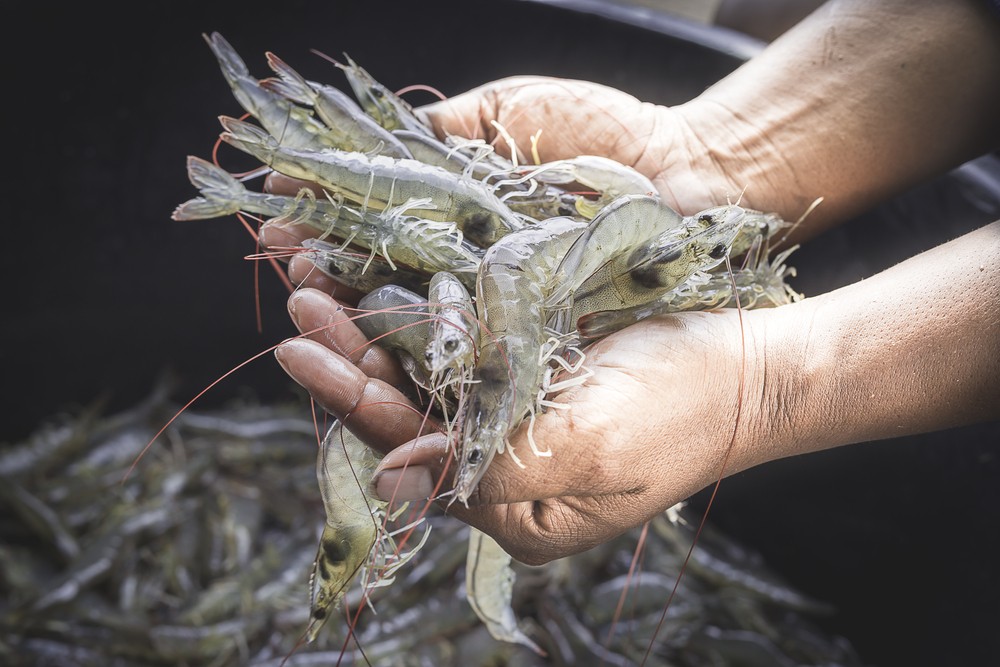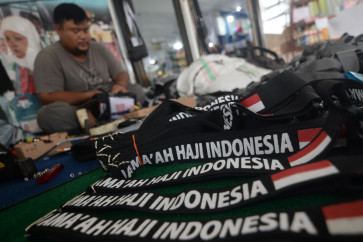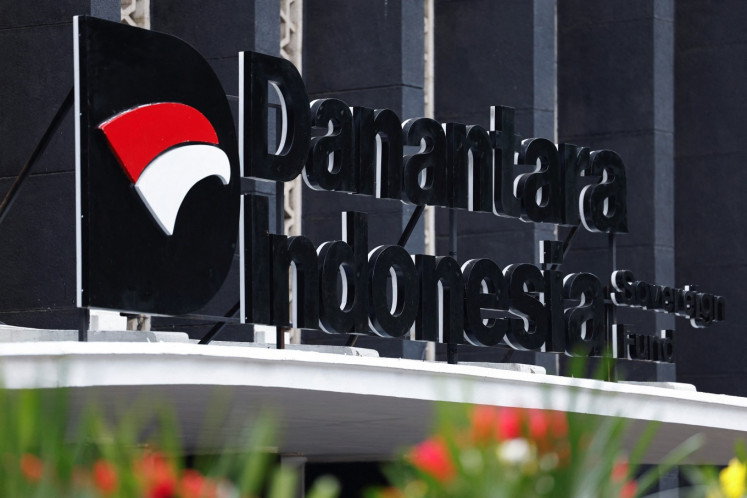Indonesia’s arduous path to boost shrimp production
In its effort to increase shrimp output to 2 million tonnes next year, the government must be cautious about the environmental impact and fluctuating export demand.
Change text size
Gift Premium Articles
to Anyone

I
ndonesian fisheries exports totaled US$6.24 billion last year, and shrimp alone accounted for just over a third of that sum. The Maritime Affairs and Fisheries Ministry is trying to increase the efficiency of shrimp farming to reach an annual output of 2 million tonnes next year.
However, industry experts say the government needs to be cautious about the environmental impact of the shrimp industry and fluctuating export demand.
Earlier this month, Maritime Affairs and Fisheries Minister Sakti Wahyu Trenggono launched preparations for the establishment of a shrimp estate in Kebumen, Central Java.
Considered the modern way to do shrimp farming, this may increase the productivity of a traditional shrimp pond by a factor of 10 or even 20.
"If this model is a success, we will revitalize all available fish ponds [based on the same method]," Sakti said on March 6, as quoted by Tempo.
Suhana, a fishery analyst, explained that applying the shrimp estate concept on traditional shrimp ponds would require specific modifications, as the existing ponds were not well organized.
"In general, ponds owned by regular farmers don't have a good sewage system. If we’re not careful, the conversion into shrimp estates may result in waste that could cause environmental damage," Suhana told The Jakarta Post on March 8.
Bad waste management that allowed for spillage of organic matter could raise the acidity level in the surrounding areas and create water pollution, he added.
"The government needs to learn from cases of fish pond damage along Java's northern coast in the 1980s that was caused by shrimp ponds that were not environmentally friendly," Suhana explained.
Capturing global demand
Haris Muhtadi, chairman of Shrimp Club Indonesia (SCI), explained that Indonesia was the fifth-largest shrimp producer globally, trailing Ecuador, China, Vietnam and India.
"There is a global challenge [for our shrimp industry] with the emergence of new players in Latin America, and reduced demand due to the energy crisis," Haris said in the Shrimp Outlook 2023 report released in January.
Another obstacle for shrimp exports is Indonesia's heavy reliance on just two markets, namely the United States (accounting for 66 percent of total shrimp exports) and Japan (18 percent), according to Suhana.
Thus, any demand disruption in those two countries severely impacts Indonesia’s overall shrimp exports.
"Last year, our export volume dropped 3.81 percent as there was a drop in demand from the US," Suhana explained.
Suhana urged the government to be careful in pushing national shrimp production to 2 million tonnes, as local market penetration was still low while exports came to just 241,000 tonnes last year.
"That means we need more effort to increase demand for our shrimp in the international market," said Suhana.
According to data from Statistics Indonesia, the shrimp export value increased from only $1.57 billion in 2016 to $ 2.16 billion last year. However, the contribution of the product to the country's overall non-oil and gas exports dropped from 1.01 percent to 0.78 percent over the same time.
Read also: 3 ways to help Indonesia grow more seafood from aquaculture, with less local impact
Other challenges shrimp farmers face are a dependency on imported feed and a high risk of diseases.
To prevent the latter, SCI's Haris suggested farmers buy seeds that are free from diseases, sterilize ponds before farming and maintain high water quality.
Another problem, he explained, had to do with administration, as the central and regional governments often had different views on regulations around ponds, with legal aspects sometimes causing friction among the community.
"Last week, a shrimp pond was sealed by a youth organization that had no legal standing. If the pond lacked a permit, law enforcement should be done by the police [instead]," Haris told the Post on Thursday.
Emergence of fishery start-ups
As the shrimp industry grows, some tech firms are trying to help farmers boost productivity. Local firms in that space, such as eFishery, Jala, Delos and Fishlog, raised at least $100 million in equity funding last year alone.
Read also: ADB pours $93m loan to advance Indonesia’s shrimp farming
According to Haris, those start-ups can help farmers manage their ponds with technology to keep tabs on acidity, oxygen, ammonia and nitrogen levels.
Others could give farmers loans to buy shrimp seeds and feed. "Their contribution is still less than 10 percent of the total shrimp market in the country, but I am confident the contribution of fintech solutions used by farmers in the coming years will grow," he said.









